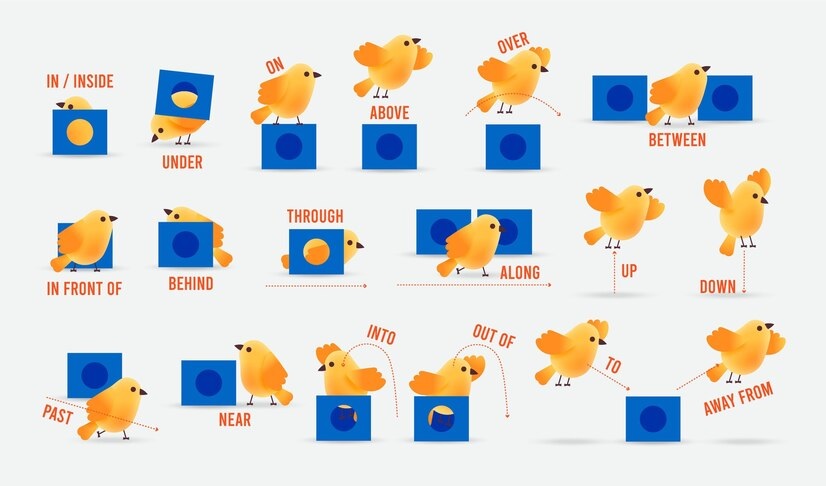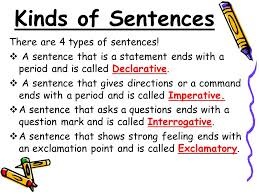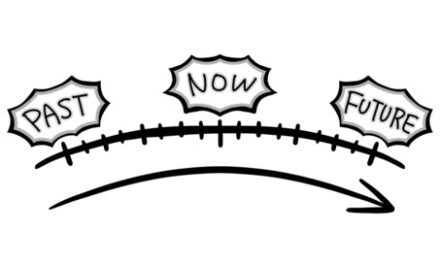Prepositions are words that show the relationship between a noun (or pronoun) and another word in the sentence. They help us understand where something is, when something happens, or how things are related. In this chapter, we will learn about some common prepositions: at, on, in, between, among, across, behind, in front of, near, beside, around, through, and against. We will explore how and where to use them with plenty of examples.
- At
– Usage: “At” is used to indicate a specific point or place.
– Examples:
– She is at the door.
– We will meet at the park.
– He is waiting at the bus stop.
- On
– Usage: “On” is used to show that something is touching the surface of something else or to indicate days and dates.
– Examples:
– The book is on the table.
– The cat is sitting on the roof.
– We have a test on Monday.
- In
– Usage: “In” is used to show that something is inside a space or to indicate months, years, or seasons.
– Examples:
– The toys are in the box.
– She lives in New York.
- Between
– Usage: “Between” is used to show the relationship of two things or people.
– Examples:
– The ball is between the two chairs.
– She is sitting between her brother and sister.
– The secret is between you and me.
- Among
– Usage: “Among” is used to show the relationship of more than two things or people.
– Examples:
– The teacher stood among the students.
– He found his keys among the books.
– She shared the sweets among her friends.
- Across
– Usage: “Across” is used to show movement from one side to the other or to indicate something on the opposite side.
– Examples:
– We walked across the bridge.
– The store is across the street.
– She swam across the river.
- Behind
– Usage: “Behind” is used to show that something is at the back of something else.
– Examples:
– The cat is hiding behind the couch.
– He stood behind the tree.
– The sun disappeared behind the clouds.
- In front of
– Usage: “In front of” is used to show that something is ahead of something else.
– Examples:
– The car is parked in front of the house.
– She stood in front of the mirror.
– The teacher stood in front of the class.
- Near
– Usage: “Near” is used to show that something is close to something else.
– Examples:
– The school is near the park.
– She lives near the beach.
– The dog is sitting near the fireplace.
- Beside
– Usage: “Beside” is used to show that something is next to something else.
– Examples:
– The lamp is beside the bed.
– He sat beside his friend.
– The book is beside the notebook.
- Around
– Usage: “Around” is used to show movement in a circular direction or to indicate something surrounding something else.
– Examples:
– We walked around the lake.
– The children ran around the tree.
– There are flowers around the house.
- Through
– Usage: “Through” is used to show movement from one side to the other, often inside something.
– Examples:
– We walked through the tunnel.
– The ball went through the window.
– She looked through the binoculars.
- Against
– Usage: “Against” is used to show opposition or physical contact with something.
– Examples:
– The ladder is leaning against the wall.
– He is playing against his friend.
– She leaned against the door.
Image Courtesy

















